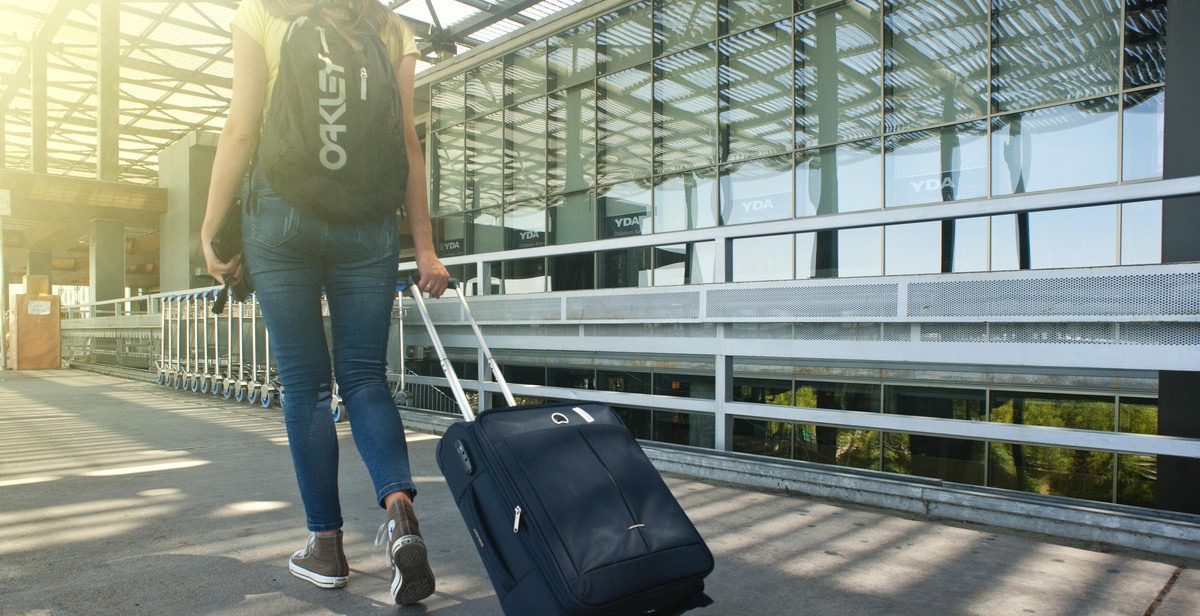Introduction: The Benefits of Using Public Transportation
Public transportation refers to any mode of transportation that is available to the general public, such as buses, trains, subways, and trams. These modes of transportation are typically operated by government agencies or private companies and are designed to provide an affordable and efficient way for people to get around.
The benefits of using public transportation are numerous. Not only is it a cost-effective way to travel, but it also has a positive impact on the environment and can help reduce traffic congestion. In addition, public transportation can be a convenient and stress-free way to commute to work or travel to different parts of a city.
Cost-Effective
One of the most significant benefits of public transportation is its affordability. Compared to the cost of owning and maintaining a personal vehicle, using public transportation can save individuals a significant amount of money. This is particularly true for those who live in urban areas where parking can be expensive and public transportation options are readily available.
Environmental Impact
Another important benefit of public transportation is its positive impact on the environment. By reducing the number of cars on the road, public transportation helps to decrease air pollution and greenhouse gas emissions. This can have a significant impact on the health of individuals and the planet as a whole.
Convenience
Finally, public transportation can be a convenient and stress-free way to travel. With many routes and schedules to choose from, individuals can easily plan their trips and avoid the hassle of driving in congested areas. Additionally, many public transportation options offer amenities such as Wi-Fi and comfortable seating, making the travel experience more enjoyable.

Environmental Benefits
One of the most compelling reasons to use public transportation is its significant positive impact on the environment. By reducing the number of cars on the road, public transportation can help to reduce air pollution and lower carbon footprints.
Reduction in Air Pollution
According to the American Public Transportation Association (APTA), transportation is the largest source of greenhouse gas emissions in the United States. Cars and trucks are responsible for more than half of all air pollution in the country, contributing to a range of health problems, including respiratory illnesses and heart disease.
By using public transportation, individuals can significantly reduce their contribution to air pollution. Buses and trains produce far fewer emissions per passenger mile than cars and trucks, making them a much cleaner option for getting around.
Lower Carbon Footprint
In addition to reducing air pollution, public transportation can also help to lower carbon footprints. Carbon footprints are a measure of the amount of greenhouse gases, such as carbon dioxide, that are produced by human activities.
According to the APTA, taking public transportation instead of driving alone can reduce an individual’s carbon footprint by up to 30%. This is because buses and trains are much more energy-efficient than cars, and they can transport many more people at once.
Furthermore, public transportation can also help to reduce congestion on the roads, which can lead to even greater reductions in carbon emissions. When there are fewer cars on the road, traffic flows more smoothly, reducing the amount of time that cars spend idling in traffic and emitting pollutants.
Conclusion
Overall, the environmental benefits of using public transportation are clear. By reducing air pollution and lowering carbon footprints, public transportation can help to create a cleaner, healthier, and more sustainable world for everyone.

Economic Benefits of Public Transportation
Public transportation offers numerous economic benefits to individuals, communities, and local economies. Here are some of the key benefits:
Cost Savings for Individuals
One of the most significant economic benefits of public transportation is cost savings for individuals. Taking public transportation is typically much cheaper than driving a personal vehicle, especially when you factor in the cost of gas, maintenance, and parking. According to the American Public Transportation Association (APTA), individuals can save an average of $9,000 per year by using public transportation instead of driving.
Furthermore, many public transportation systems offer discounted fares for students, seniors, and low-income individuals. This helps make public transportation more affordable and accessible to those who may not be able to afford a personal vehicle.
Reduction in Traffic Congestion
Another significant economic benefit of public transportation is the reduction in traffic congestion. Traffic congestion not only wastes time and causes frustration for drivers, but it also has a significant economic impact. According to the Texas Transportation Institute, traffic congestion costs the United States economy more than $100 billion annually in lost productivity and wasted fuel.
By using public transportation, individuals can help reduce traffic congestion, which can lead to a more efficient and productive economy. Additionally, public transportation can help reduce the need for costly road expansions and repairs, which can save local governments and taxpayers money.
Boost to Local Economies
Finally, public transportation can provide a significant boost to local economies. By making it easier for individuals to access employment, education, and other opportunities, public transportation can help attract new businesses and residents to a community. Additionally, public transportation can help reduce transportation costs for businesses, which can make them more competitive and profitable.
According to a study by the APTA, every $1 billion invested in public transportation can generate up to $4 billion in economic returns. This includes increased business sales, increased property values, and increased tax revenues.
Conclusion
Overall, the economic benefits of public transportation are clear. From cost savings for individuals to a boost to local economies, public transportation offers numerous advantages that can help create a more efficient, productive, and prosperous society.

Social Benefits of Public Transportation
Public transportation offers numerous social benefits that cannot be ignored. Here are some of the most significant benefits:
Increased Accessibility
Public transportation provides increased accessibility to people who may not have access to private transportation. This includes people with disabilities, the elderly, and low-income individuals who cannot afford to own a car. Public transportation provides a safe and reliable means of transportation, allowing people to get to work, school, and other important destinations.
Additionally, public transportation can help reduce traffic congestion, making it easier for everyone to get around. When more people use public transportation, there are fewer cars on the road, which means less traffic and less pollution.
Promotion of Community
Public transportation promotes a sense of community by bringing people together. When people ride public transportation, they have the opportunity to interact with others from different backgrounds and cultures. This can help break down barriers and promote understanding and tolerance.
Public transportation also helps connect people to their communities. By providing access to local businesses, parks, and other amenities, public transportation helps people stay connected to their neighborhoods and build a stronger sense of community.
Improved Public Health
Public transportation can also have a positive impact on public health. When people use public transportation instead of driving, they are more likely to engage in physical activity, such as walking to and from stops and stations. This can help reduce the risk of obesity and other health problems associated with a sedentary lifestyle.
Additionally, public transportation can help reduce air pollution, which can have a significant impact on public health. By reducing the number of cars on the road, public transportation can help reduce emissions and improve air quality, which can help reduce the risk of respiratory problems and other health issues.
Conclusion
Overall, public transportation provides numerous social benefits that cannot be ignored. From increased accessibility to improved public health, public transportation plays a vital role in our communities. By promoting the use of public transportation, we can create more sustainable, connected, and healthy communities for everyone.

Conclusion
Public transportation is an essential part of our daily lives, providing numerous benefits that positively impact our environment, health, and economy. By using public transportation, we can reduce our carbon footprint, save money, and improve our overall well-being.
Environmental Impact
One of the most significant benefits of public transportation is its positive impact on the environment. By using public transportation, we can reduce our carbon footprint and help to combat climate change. Public transportation produces fewer emissions per passenger than private vehicles, making it a more sustainable option for travel.
Economic Benefits
Public transportation is also an excellent way to save money. By using public transportation, we can avoid the high costs associated with owning and maintaining a car. Additionally, public transportation provides affordable access to employment opportunities, education, and healthcare, which can help to improve our overall quality of life.
Health Benefits
Using public transportation can also have numerous health benefits. Walking to and from public transportation stops can help to increase our daily physical activity, which can reduce the risk of obesity, heart disease, and other chronic illnesses. Additionally, public transportation can help to reduce air pollution, which can have a positive impact on our respiratory health.
Conclusion
Overall, public transportation is a vital component of our society, providing numerous benefits that positively impact our environment, health, and economy. By using public transportation, we can make a positive impact on our world while improving our own lives.
| Benefits of Public Transportation | Environmental Impact | Economic Benefits | Health Benefits |
|---|---|---|---|
| Reduce carbon footprint | ✔️ | ✔️ | ✔️ |
| Save money | ✔️ | ✔️ | |
| Access to employment, education and healthcare | ✔️ | ||
| Increased physical activity | ✔️ | ||
| Improved respiratory health | ✔️ | ✔️ |
